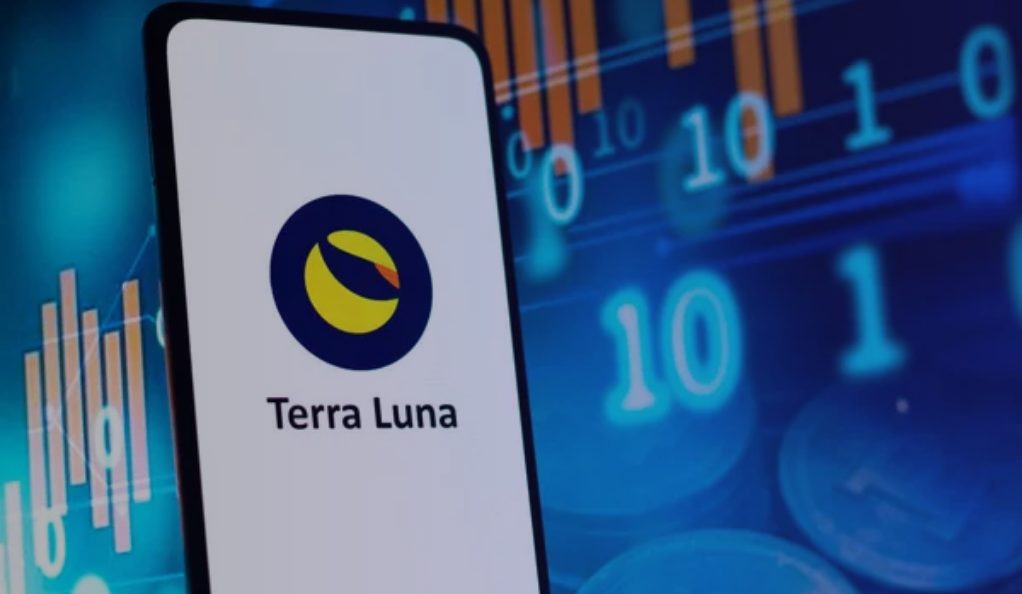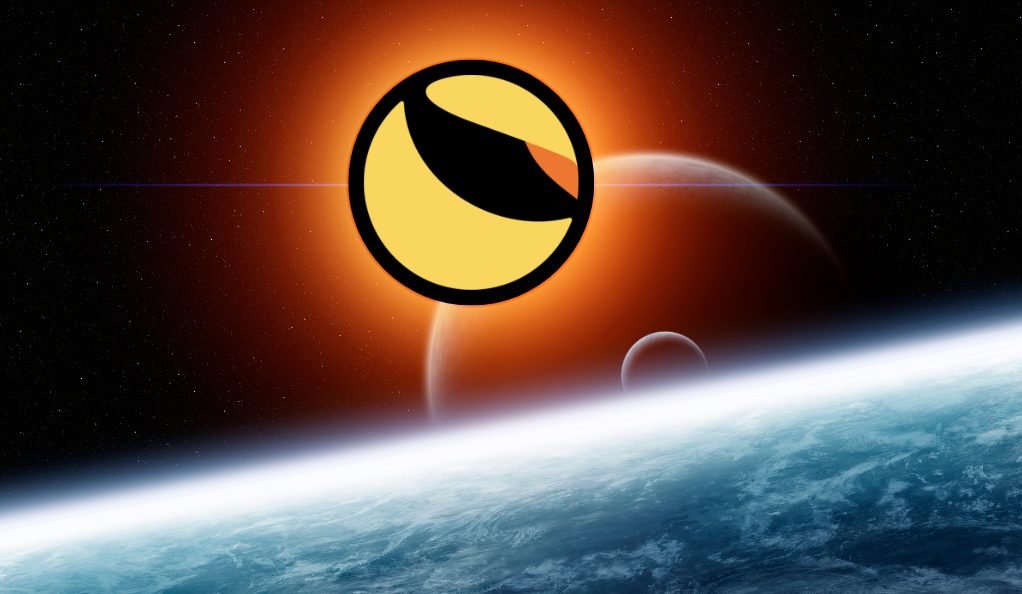Terra Luna entered the crypto space as an innovative product that could have improved the adoption of cryptocurrencies globally. Its main pillars were the creation of stablecoins – initially designed to use cryptocurrencies for ecommerces – and decentralization.

An initial limited use case became a success in the crypto world, and the project continued developing thanks to a successful IPO (Initial Public Offering) led by top players in the crypto space.
After a few years, the project showed weakness that led to a catastrophic collapse that hit the whole crypto space – and top Terra Luna investors.
Go on reading to discover how and why Terra Luna was born, and how it changed after the collapse – which led to the birth of Terra Classic.
Table of Contents
The Terra Luna Collapse
There are still many discussions around the possible reasons that led to the Terra Luna collapse.
We know for sure that it occurred because of the sudden sell-off that involved UST (TerraUSD), causing liquidity issues. But we don’t know why this happened: some think that it was just a reaction to rising interest rates, while some think that it was an attack against Terra Labs.
In any case, May 2022 was the month of the crash. The event that finally led to the collapse was the unstaking of over $2 billion UST from the Anchor Protocol, and the sell-off of hundreds of millions worth of the token.
The Anchor Protocol was the market maker created by Terraform Labs, the company behind the development of Terra Luna, mainly used by investors for staking.
These sudden withdrawals caused a domino effect that made Luna, one of the top tokens of the Terra blockchain, crash.
Despite Do Kwon, co-founder of Terraform Labs, having earned his reputation as a crypto guru, not all found the tokenomics designed by the company a sustainable system.
It suffice to say that the Anchor Protocol offered 20% interest rates: there were doubts on how the protocol was able to collect funds, and many concluded that it was just a Ponzi scheme.
Right after the launch of Terra in 2018, the head of risk at MakerDAO, Cyrus Younessi, said that the project would collapse. The reason behind this assumption was that TerraUSD was an algorithmic stablecoin: differently from “traditional” stablecoins, pegged to fiat currency simply through reserves, the peg of Terra depended on the success of Luna and on a series of algorithms – as Younessi wrote, it was like if Terra was the stablecoin and Luna then collateral. So, the two were deeply connected, and the fall of one of the two would create panic and a dramatic collapse. This happened a few years later.
Birth of Terra Luna Classic (LUNC)
In April 2022, LUNA reached its all-time-high at over $119.

In the previous months, top Terra investors had outlined a plan to use Bitcoin to fuel the UST peg in case of crisis, and it seems that the Luna Foundation Guard (LFG) – the foundation launched by Do Kwon to favor the stability of Terra and one of the major holders of the Terra coins – acquired over $1 billion in BTC.
When LUNA reached its ATH, many were the investors who used UST to get exposure to different crypto projects – like Avalanche (AVAX). That’s why the fall was even more dramatic, resulting in one of the major fails and dangerous events in the crypto space history.
Retail and institutional traders started sharing their experiences and how they suddenly lost everything. Very few investors were able to close their positions before the collapse.
In this dramatic scenario, Nansen revealed that the collapse wasn’t caused by a single attack. In the meantime, a new Terra was born – on May 28, 2022, Terra 2.0 was launched as a hard fork of the previous Terra blockchain.
The LUNA coin rebranded in Luna Classic (LUNC), and the top crypto companies that had invested in Terra – including Binance – listed the crypto on their exchanges. Despite this, the price of LUNC dropped pretty soon.
The “revival plan” was proposed by Do Kwon and approved by the Terra community, which tried to recover the lost funds and reputation even after the arrest of Do Kwon.
LUNC was airdropped to TerraUSD and LUNA holders, and the new blockchain was designed with some differences when compared to the previous project – for instance, without the algorithmic correlation between the two coins, as well as the burning system that was initially thought to keep the supply of LUNA scarce.
Major Developments in LUNC
All these major changes were then reviewed and new proposals were made by the community, especially to increase the value of LUNC and to add security layers.
At the beginning of June 2023, the price of LUNC saw a significant increase – by 20% – due to the Parity Upgrade proposal – then approved by the community.
Whales joined the positive trend, and even Binance burnt over one billion Terra tokens to keep the price increase.
The upgrade was focused on governance: the launch of the version 2.1.0 of the network introduced a minimum 5% commission for validators, as well as security updates.
Moreover, the upgrade included a significant alignment with the Cosmos ecosystem, especially thanks to CosmWasm – a module of the Cosmos SDK that works as a smart contract platform. The Alliance module would increase the opportunities for cross-chain activities.
In the meantime, an internal team set up an environment for USTC – the rebranded TerraUST, which became TerraUST Classic, to repeg the tokens.
Moreover, there is an alignment with the most advanced technological developments with the proposal for the introduction of LUNC Block Entropy, the artificial intelligence application of Edward Kim that, once deployed, allows for the birth of a new blockchain, powered by artificial intelligence, which will facilitate the integration between the blockchain and machine learning tasks.
So, an impressive focus on developers, who should further improve the project over time, and on the actual value of the blockchain and the cryptos built on top of it.
The community is also working on liquid staking derivatives that would benefit from the Quicksilver network: this new advancement would allow for interchain staging on the Cosmos protocol, improving staking rates for USTC.
The Role of the Community
In this story, the role of the crypto community behind Terra was pivotal, and it must be said that they carried out an almost impossible task in keeping alive the Terra 2.0 project.
After the fork, the new Luna coins were distributed among all the members of the community, divided into different groups, and the wallet of Terraform Labs was excluded from the distribution.
The project became decentralized and totally under the governance of the community. They’re responsible for the management of the network, as well as new developments and upgrades.
In short, they preferred to protect the project and improve it instead of simply losing funds. This might be the reason behind the new projects related to the Terra ecosystem, which is now involved in a number of partnerships and cross-chain projects, as well as in upgrades aimed at improving the value of LUNC.
The Current State of LUNC
LUNC is currently the 75th crypto by market capitalization according to CoinMarketCap. Of course, it is not the same as in its moment of maximum splendor, when it was the 7th crypto, but considering the recent history of Terra, it is a remarkable achievement for the crypto project – and its community.
The current circulating supply of LUNC is over 5.822 billion LUNC, with a 24-hour trading volume of $33,083,690 and a market cap of $530,118,263.
The price of LUNC – at around $0.000091 – is slightly down (around 1%) in line with other cryptocurrencies – including the top ones BTC and ETH, which still need to recover from the downtrend that developed during the last months.
The sentiment of traders and analysts doesn’t seem positive in the short term, with the main technical indicators that oscillate between sell and strong sell.
Consequences of the Terra Luna Collapse
As we mentioned, the collapse of Terra has been one of the most dramatic events in the crypto space observed so far.
Due to the design of the crypto project – the fact that USDT was a stablecoin and that swaps were so easy between USDT and LUNA, as well as other cryptocurrencies, and that top investors like Binance has a significant exposure to the project, the domino effect caused by the collapse had unprecedented consequences.
As reported by Forbes, the whole crypto community still has to recover the loss: it is estimated that over $60 billion dollars were lost during and after the collapse, shaking all crypto markets and the very market capitalization of digital assets, which hardly got back to over $1 trillion.
Along with the consequences suffered by traders and investors in financial terms, we should also consider the repercussions on the reputation of cryptocurrencies. The Terra case was maybe the spark regulators needed to further question the reliability of digital assets – and the collapse of FTX was around the corner.
2022 wasn’t a great year for cryptocurrencies and yes, the market still has to recover. But it is important to say that traders and investors were resilient. Of course, the lack of liquidity and the uncertainty related to the upcoming regulatory frameworks around the world didn’t favor an immediate reaction, but instead of abandoning the crypto market, there was a shift towards decentralization and projects fully managed by crypto communities.
Conclusion
Despite its history, LUNC is now alive and fully working. Its community, including developers, are constantly finding new ways to improve the project and make it extremely valuable.
From this story, maybe we learnt that it is not so important to assess the responsibilities of individuals, but that innovation shouldn’t be threatened by a few bad stories.
Even during the worst crisis, the crypto community showed its capacity to see the big picture, a technology that can improve the financial system globally and give people full control over their financial assets and destinies.
Of course, this also taught people that too much hype around a project might become a red flag, since it might lead to unjustified investments led by enthusiasm.
In light of this, always remember to do your own research before investing in any asset!
FAQs
Why did Terra Luna collapse?
The cause of the collapse was the depeg of TerraUSD (UST), the algorithmic stablecoin of Terra. The depeg was caused by sudden withdrawals and liquidity swaps involving hundreds of millions of dollars. Even if it seems to be sure that this wasn’t due to a single attack, it might be hard to assess with certainty what were the causes behind these events.
What is CosmWasm?
CosmWasm is the smart contract platform that works with the Cosmos SDK module. The alignment of Terra and Cosmos was a significant proposal of the Terra crypto community, showing a focus on developers and the actual value they want to achieve for the new Terra network.
Will LUNC reach $1?
It currently seems something very improbable for many reasons – investors and traders still need time to fully recover their trust in Terra, the crypto market as a whole is going through tough times, the market cap isn’t still near to the levels it should reach to make this price possible. But the community behind Terra Classic is working on upgrades and developments that might lead LUNC to reach $1 in the future.
WeInvests is a financial portal-based research agency. We do our utmost best to offer reliable and unbiased information about crypto, finance, trading and stocks. However, we do not offer financial advice and users should always carry out their own research.
Read More







